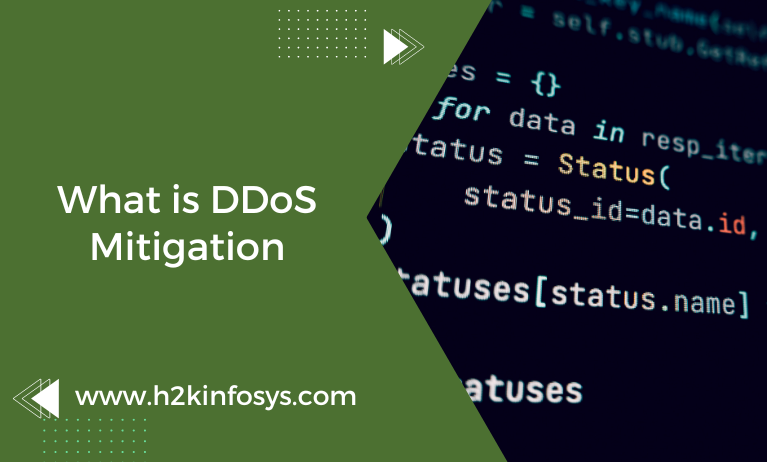Introduction: Why DDoS Mitigation Is a Critical Cybersecurity Skill
In a digital-first world, businesses rely heavily on online platforms to serve users, customers, and clients. This digital exposure also makes them targets for malicious cyberattacks. One of the most widespread and destructive types of attacks is the Distributed Denial of Service (DDoS) attack. These attacks can take down websites, freeze services, and cost companies millions in downtime.
It has become an essential defense mechanism that every cybersecurity professional must understand and implement. For learners enrolled in a Cyber security training courses, mastering DDoS Mitigation provides a real-world skill set that employers highly value.
What Is a DDoS Attack?
A DDoS attack occurs when multiple compromised systems send overwhelming amounts of traffic to a target, such as a web server, causing it to slow down or crash entirely. The intent is to disrupt regular traffic and block legitimate users from accessing services.
Think of it as a traffic jam clogging up a highway, preventing vehicles from reaching their destinations.
Types of DDoS Attacks You Must Know
Understanding different DDoS attack types helps in designing robust DDoS Mitigation strategies.
Volume-Based Attacks
Flood the network with massive data packets to exhaust bandwidth.
Protocol Attacks
Exploit server vulnerabilities in protocols like TCP, UDP, or ICMP.
Application Layer Attacks
Target application-level resources, such as HTTP requests, to overload web servers.
These variations require flexible and dynamic DDoS approaches to counteract the different layers being attacked.

What Is DDoS Mitigation?
It is the process of detecting, analyzing, and neutralizing DDoS attacks to ensure service continuity. It includes multiple stages such as identifying traffic anomalies, filtering malicious packets, rerouting traffic, and restoring normal operations. It’s a core concept in most Cyber security training and placement programs and a sought-after capability for any cybersecurity role.
Step-by-Step Breakdown of DDoS Mitigation
Professionals trained through a quality cyber security course and job placement program follow a four-step process:
Step 1: Detection
Detect traffic spikes and suspicious patterns through monitoring tools and logs.
Step 2: Diversion
Reroute suspicious traffic through scrubbing centers or proxies to protect the main servers.
Step 3: Filtering
Use firewalls, intrusion prevention systems, and AI-based algorithms to block malicious requests.
Step 4: Recovery
After stopping the attack, conduct root cause analysis, update patches, and reinforce the mitigation plan.
Effective Mitigation depends on this layered and proactive approach, blending tools, techniques, and skilled analysts.
Real-World Use Case of DDoS Mitigation: GitHub Attack
In 2018, GitHub faced one of the largest DDoS attacks ever, with peak traffic reaching 1.35 Tbps. Thanks to immediate detection and automated DDoS Mitigation protocols, the site recovered within minutes. The incident showcased the necessity of proactive mitigation measures and how companies with prepared teams can defend their digital infrastructure successfully.
This real-world example is often studied in cyber security training courses to help learners relate to modern threats and responses.

Tools and Technologies
Firewalls and Routers
Filter and block known malicious IP addresses.
Intrusion Prevention Systems (IPS)
Scan live traffic and automatically drop suspicious packets.
Anomaly Detection Systems
Utilize AI and machine learning to identify unusual traffic behavior early.
Cloud-Based Scrubbing Services
Offer dynamic DDoS Mitigation at scale, redirecting and filtering harmful traffic before it hits the main server.
Each tool plays a crucial role in building a comprehensive DDoS Mitigation architecture.
Why DDoS Mitigation Skills Matter for Cybersecurity Jobs
In today’s threat landscape, no cybersecurity job is complete without knowledge of DDoS Mitigation. Roles such as Security Analysts, Incident Responders, and SOC Engineers require hands-on experience with DDoS defense.
Through cyber security training and placement, students gain exposure to:
- Real-world DDoS scenarios
- Live demonstrations of mitigation
- Simulation-based learning
- Industry-relevant toolkits and platforms
How H2K Infosys Teaches DDoS Mitigation
At H2K Infosys, our cyber security training courses include dedicated modules for DDoS Mitigation, covering:
- Setup of monitoring tools like Wireshark and Snort
- Identification of botnet behavior
- Hands-on labs to simulate attacks and deploy mitigation strategies
- Capstone projects focused on high-availability systems
These experiences are designed to align closely with job expectations in the real world, preparing learners for success through cyber security training near me and beyond.
Best Practices for DDoS Mitigation
To succeed in protecting networks, learners and professionals should adhere to the following practices:
- Rate Limiting – Throttle requests from users to prevent overload
- Redundancy and Failover – Ensure systems are distributed and backed up
- Bot Detection and Filtering – Use AI tools to differentiate real users from bots
- Traffic Anomaly Monitoring – Identify spikes early and act fast
- Regular System Patching – Keep servers and software up to date
These are core skills taught in hands-on cybersecurity training and placement programs.
Visual Reference: The DDoS Mitigation Lifecycle
[Traffic Surge]
↓
[Detection of Anomaly]
↓
[Routing to Scrubber]
↓
[Filtering Malicious Packets]
↓
[Allowing Legitimate Users]
↓
[Recovery and Analysis]This simplified flow is often a core learning tool in cyber security training courses, helping visualize the DDoS Mitigation process.
Trends in Modern DDoS Mitigation
AI-Powered Defense
Smart algorithms now anticipate DDoS patterns and act faster than human operators.
Hybrid Protection Models
Companies now use both on-premise and cloud-based DDoS Mitigation platforms for greater reliability.
Real-Time Reporting
Dashboards and alert systems improve decision-making during an ongoing attack.
These trends show how DDoS Mitigation is evolving and becoming more integral to every cybersecurity strategy.
Key Takeaways
- DDoS Mitigation is essential in defending digital assets from large-scale attacks.
- Knowing the types of DDoS attacks helps you prepare effective defense mechanisms.
- Mastering DDoS Mitigation is vital for high-paying cybersecurity roles.
- A structured cyber security training course with placement will give you real-world skills, hands-on labs, and industry context.
Conclusion: Learn DDoS Mitigation and Elevate Your Career
Want to become a skilled cybersecurity professional with real-world expertise?
Enroll in H2K Infosys’ Cyber security course with placement and gain mastery over DDoS Mitigation today.


























